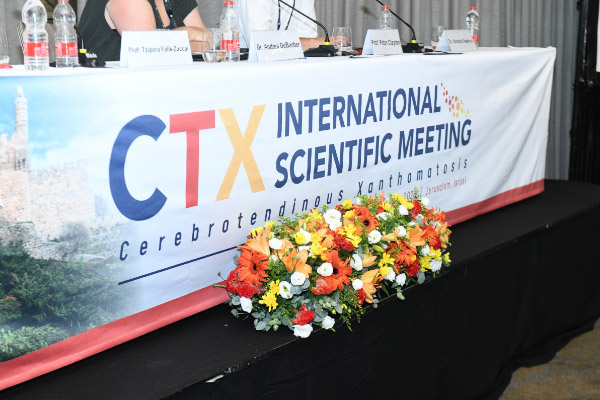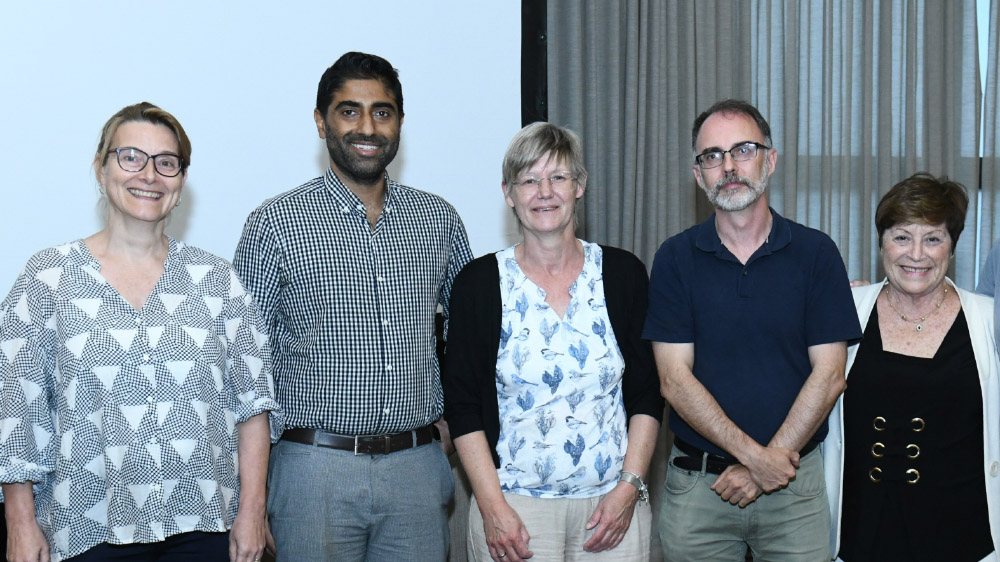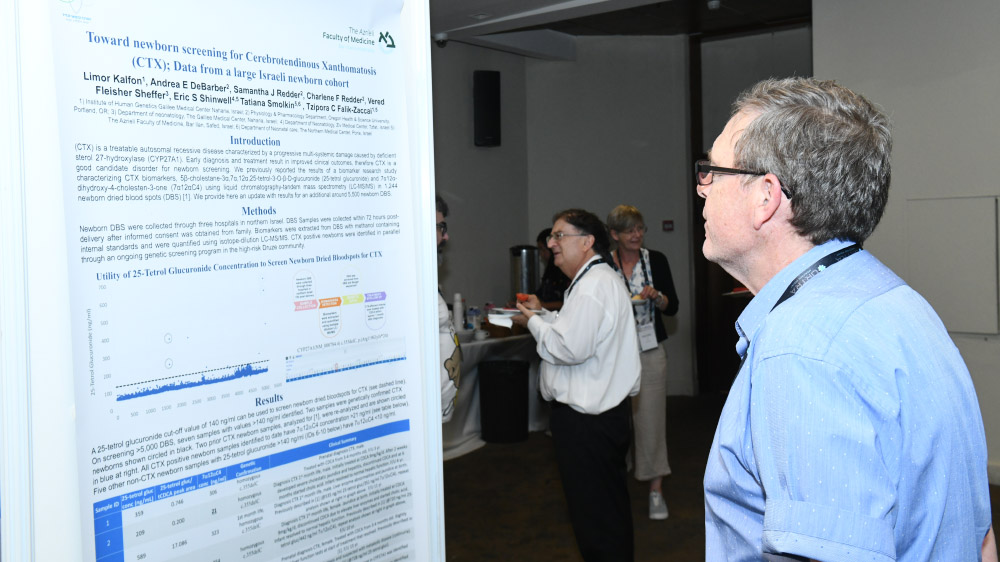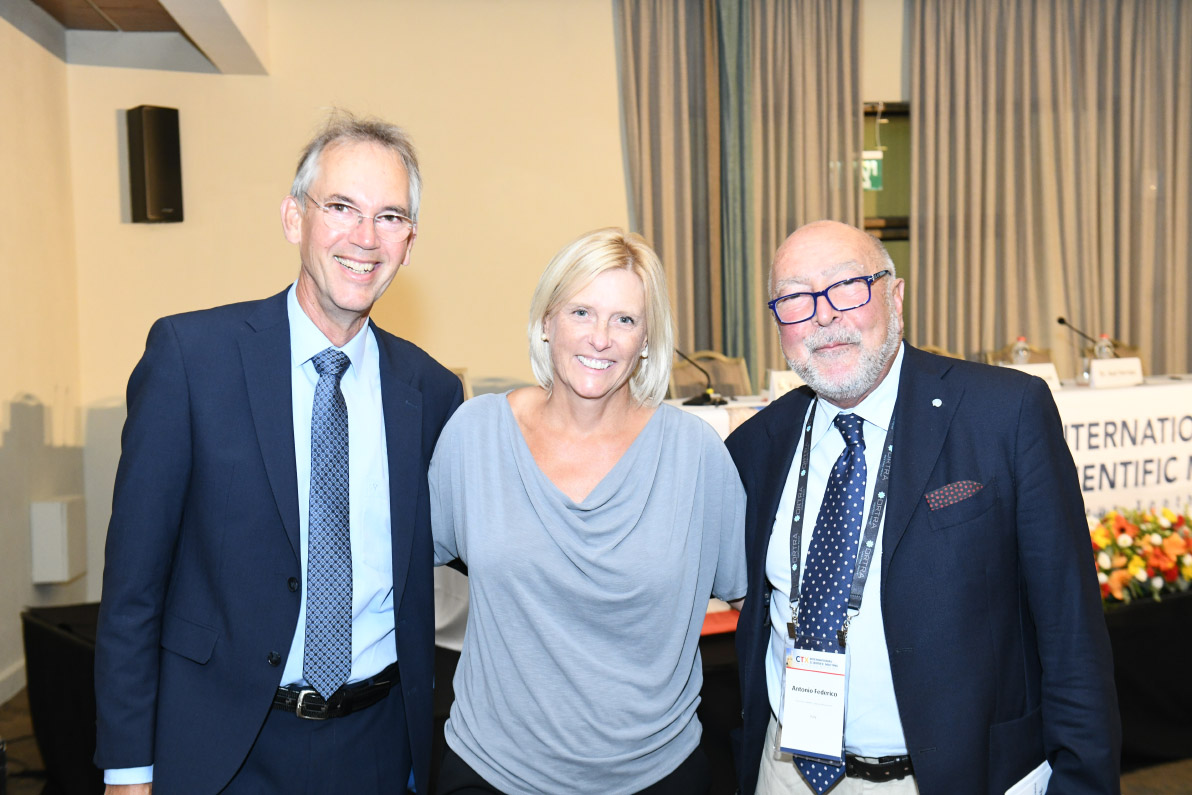The concept of the inaugural International CTX Scientific Meeting took root at the Global Leukodystrophy Initiative (GLIA) Scientific Meeting in Philadelphia in early October 2022. Observing the collaborative synergy among global leukodystrophy patient groups, the trio of Andrea DeBarber, PhD, Bob Steiner, MD, and Jean Pickford, executive director of the CTX Alliance, initiated discussions on how to enhance collaboration within the  CTX international community. The idea to host an international meeting as a satellite event to the Study of Inborn Errors of Metabolism (SSIEM) Annual Symposium in Jerusalem in August 2023 gained traction, given the anticipated overlap in attendees and speakers. Dr. DeBarber enlisted the support of global CTX experts Dr. Antonio Federico from Italy, Dr. Hidde Huidekoper from the Netherlands, and Dr. Tzipora Falik-Zaccai from Israel, fueling the team’s expanded efforts. This powerhouse team set plans into motion, developing an agenda, recruiting speakers, fundraising, and enlisting a meeting planning company to coordinate logistics.
CTX international community. The idea to host an international meeting as a satellite event to the Study of Inborn Errors of Metabolism (SSIEM) Annual Symposium in Jerusalem in August 2023 gained traction, given the anticipated overlap in attendees and speakers. Dr. DeBarber enlisted the support of global CTX experts Dr. Antonio Federico from Italy, Dr. Hidde Huidekoper from the Netherlands, and Dr. Tzipora Falik-Zaccai from Israel, fueling the team’s expanded efforts. This powerhouse team set plans into motion, developing an agenda, recruiting speakers, fundraising, and enlisting a meeting planning company to coordinate logistics.
On August 27th and 28th, the groundbreaking International CTX Scientific Meeting unfolded in Jerusalem, dedicated exclusively to cerebrotendinous xanthomatosis (CTX). The overarching goal was to catalyze essential international basic research and clinical collaborations for CTX, aiming to advance understanding and enhance outcomes for CTX patients and their families, and foster patient group partnerships.
The comprehensive meeting agenda showcased lectures and discussions from esteemed CTX researchers, medical professionals, and leaders of patient advocacy groups from 11 countries. The event drew 109 participants, including 75 in person, 16 attending virtually, and 18 local CTX patients from Israel, constituting the largest international gathering of CTX experts to date. The CTX Alliance took pride in providing this unprecedented opportunity to foster global collaboration for this rare disease.
In addition to the excellent presentations, the meeting included the privilege of presenting a lifetime achievement award to Dr. Vladimir Berginer, recognizing his groundbreaking contributions to CTX research and his commitment to improving the lives of CTX patients and their families. Dr. Berginer’s extensive career, from studying medicine in Kishinev to becoming a neurologist and head of the neuro-vascular unit at Soroka Medical Center, showcased his pivotal role in understanding the mechanism and potential cure for CTX. The impact of his research has transformed the perception of CTX from a fatal to a treatable disease, as evidenced by the patients and their families in Israel expressing gratitude for his devotion.
Congratulations were also extended to the recipients of the four Junior Investigator Travel Awards: Julia Lier, MD, Brian Wishart, DO, Melanie Roitman, MD, and Limor Kalfon, PhD.
Prior to the scientific meeting, key stakeholders, notably leaders representing active CTX patient advocacy groups worldwide met for a morning of interactive workshops. These sessions were specifically geared towards discussions on establishing an international CTX patient registry, assessing obligate CYP27A1 heterozygotes, and facilitating collaboration among global patient advocacy groups. Leaders representing the CTX Alliance (United States), CTX Magen (Israel), MetabERN (Netherlands), and Asociacion Española Xantomatosis Cerebrotendinosa (Spain) patient groups assume a crucial role in bringing together affected individuals and families. Their contributions extend to education, fostering peer-to-peer connections, providing resources, and advocating for earlier detection.
Attendees appreciated various aspects, including the opportunity for small chats and building friendships, gathering of professionals with shared interests, and the chance to meet individuals working in the field, as well as patients and advocates. The international nature of the conference allowed for valuable brainstorming sessions and connections with renowned clinicians and researchers worldwide.
Attendees found real-life experience presentations by expert international clinicians providing patient care and discussions on the history and clinical care guidance of CTX particularly meaningful. The gathering provided insights into new neurological biomarkers and innovative therapies, with discussions on biochemistry and assays for optimal biomarkers.
The conference facilitated connections with researchers, clinicians, and patient advocacy groups, fostering collaboration and interdisciplinary interactions. Participants enjoyed the presence of a majority of CTX experts in one room, providing a unique opportunity to learn about the latest treatment paradigms, newborn screening (NBS), and research developments. The quality of participants, well-organized sessions, and a positive atmosphere contributed to the overall success of the meeting.
Key Takeaways from the Meeting
Despite being classified as a rare disease, CTX is likely underdiagnosed. Recent studies using genetic and bioinformatic methods indicate a higher incidence than previously believed, emphasizing the need for increased awareness and screening.
International collaboration among patient advocacy organizations is addressing key initiatives: advocating for earlier diagnosis, promoting education for physicians and patients, ensuring access to treatment, and providing support and connections for those affected by CTX. Collaborative efforts encompass CTX newborn screening, physician and patient educational programming, and creating online support platforms to share experiences and information.
Access to affordable and necessary treatments for CTX is a shared objective achieved through international collaboration, resource pooling, and advocating for global standards. Patient advocacy groups are instrumental in providing support through online platforms, international conferences, and cross-border patient assistance programs.
The international meeting in Jerusalem showcased a significant commitment to the CTX patient community, fostering scientific collaboration and building lasting relationships among patient group leadership. The key takeaways highlighted the imperative to increase awareness, the need for a comprehensive registry, the importance of early identification and treatment, and the promising future of biomarkers and treatments.













